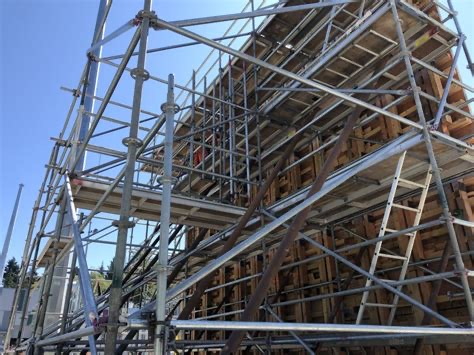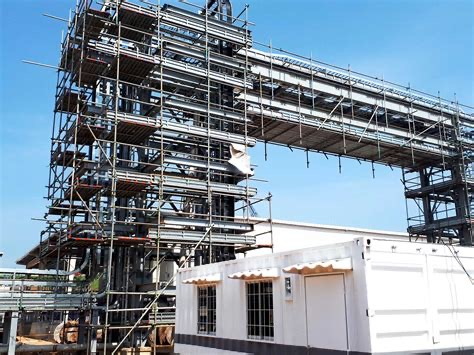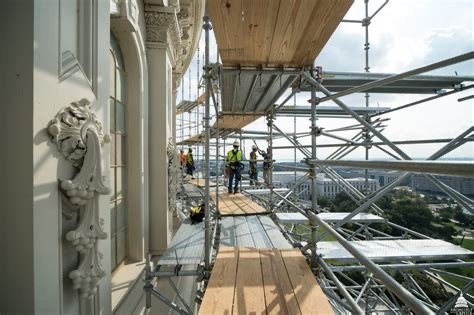Content Menu
● What is Tube and Clip Scaffolding?
● Strength of Tube and Clip Scaffolding
>> Heavy-Duty Construction
>> Flexibility Without Compromise
>> Compliance with Safety Standards
● Safety of Tube and Clip Scaffolding
>> Inspection and Competent Assembly
>> Stable Foundations
>> Guardrails and Fall Protection
>> Regular Inspections and Maintenance
>> Worker Training and Safety Protocols
● Advantages of Tube and Clip Scaffolding for Safety and Strength
● Common Safety Challenges and Solutions
● Conclusion
● FAQ
>> 1. How strong is tube and clip scaffolding compared to other scaffolding types?
>> 2. What safety standards apply to tube and clip scaffolding?
>> 3. How often should tube and clip scaffolding be inspected?
>> 4. What training is required for workers using tube and clip scaffolding?
>> 5. Can tube and clip scaffolding be used on uneven ground?
● Citations:
Tube and clip scaffolding, also known as tube and clamp scaffolding, is a widely used scaffolding system in construction and industrial projects. Its strength, flexibility, and adaptability make it a preferred choice for complex and irregular job sites. This article explores the strength and safety aspects of tube and clip scaffolding in detail, supported by expert guidelines, safety standards, and practical insights.

What is Tube and Clip Scaffolding?
Tube and clip scaffolding consists of steel tubes connected by clips or clamps (couplers) that hold the tubes together at various angles. The system is highly modular and can be assembled into almost any shape or size, making it ideal for projects where other scaffolding types may not fit.
- Steel Tubes: Main structural elements, usually galvanized for corrosion resistance.
- Clips/Clamps: Connect tubes at right angles or swivel to allow angled connections.
- Base Plates: Provide stable footing and distribute loads evenly.
- Braces: Diagonal tubes that increase rigidity and prevent swaying.
- Platforms: Boards laid across horizontal tubes to create safe working surfaces.
Tube and clip scaffolding is known for its strength and adaptability, able to support heavy loads and multiple platforms simultaneously[4][5][6].
Strength of Tube and Clip Scaffolding
Heavy-Duty Construction
The steel tubes used in tube and clip scaffolding are designed to withstand significant vertical and lateral loads. Typically made from high-quality steel, these tubes can support heavy materials, equipment, and multiple workers on different levels. The clamps tightly secure the tubes, creating a rigid frame that resists bending and swaying.
- Load Capacity: Heavy-duty tube and clip scaffolding can support loads of up to 75 lbs per square foot, suitable for demanding construction tasks[5].
- Multiple Platforms: The system supports multiple working platforms at various heights, increasing productivity without compromising safety.
Flexibility Without Compromise
Unlike modular scaffolding with fixed connection points, tube and clip scaffolding allows tubes to be cut and connected at any length or angle. This flexibility does not reduce strength when properly assembled; in fact, it allows scaffolding to be customized for optimal load distribution and stability on irregular surfaces or complex structures[4][5].
Compliance with Safety Standards
Tube and clip scaffolding components comply with rigorous safety standards such as OSHA, ANSI, BS 1139, and EN 12811. These standards ensure that the materials and assembly methods meet minimum strength and safety requirements[6].
Feature | Description | Impact on Strength and Safety |
High-quality steel tubes | Galvanized steel tubes resistant to corrosion | Ensures long-lasting structural integrity |
Reliable clamps | Right-angle and swivel clamps tightened to 45 ft-lbs | Secure connections prevent loosening and failure |
Base plates | Distribute load evenly on firm ground | Prevents settlement and tipping |
Diagonal bracing | Adds rigidity and prevents sway | Enhances overall scaffold stability |
Compliance standards | OSHA, ANSI, BS 1139, EN 12811 | Guarantees tested strength and safety |
Safety of Tube and Clip Scaffolding
Inspection and Competent Assembly
Safety begins with proper assembly by trained and competent personnel. Each time before use, a competent person must inspect the scaffold to ensure it is correctly assembled, level, plumb, and fully braced. All base plates must be in firm contact with sills or solid ground, and platforms must be fully decked with guardrails in place[1][2].
Stable Foundations
The scaffold must rest on a stable, level surface capable of supporting at least four times the imposed load. Base plates and sole boards are used to distribute weight and prevent sinking or displacement[2][3].
Guardrails and Fall Protection
Guardrails and toeboards are essential safety features to prevent falls and falling objects. Personal fall arrest systems may also be required depending on the height and local regulations[2][6].
Regular Inspections and Maintenance
Routine inspections by qualified supervisors should be conducted monthly, with damaged or worn components replaced immediately. Quarterly audits by safety coordinators further ensure ongoing safety compliance[6].
Worker Training and Safety Protocols
Workers must be trained in scaffold erection, use, and dismantling. They should wear appropriate personal protective equipment (PPE) such as hard hats, gloves, and fall protection harnesses. Hazard assessments should be conducted before starting scaffold work to identify risks like power lines or unstable ground[2][6].

Advantages of Tube and Clip Scaffolding for Safety and Strength
- Customizable Configurations: Adaptable to any shape or height, ensuring proper load distribution.
- Robust Construction: Steel tubes and secure clamps create a strong, stable framework.
- Multiple Platforms: Supports simultaneous work at different levels, improving efficiency.
- Compliance with Safety Codes: Meets or exceeds OSHA and international standards.
- Ease of Inspection: Simple components allow for thorough and quick safety checks.
- Durability: Galvanized steel resists corrosion, maintaining strength over time.
Common Safety Challenges and Solutions
Challenge | Solution |
Loose or improperly tightened clamps | Use torque wrenches to tighten clamps to 45 ft-lbs[6] |
Uneven ground causing instability | Use base plates and sole boards; level the scaffold properly[2] |
Missing guardrails or toeboards | Install guardrails and toeboards on all platforms above 10 feet[2] |
Overloading platforms | Adhere to load limits and distribute weight evenly[5] |
Lack of worker training | Provide comprehensive scaffold safety training and supervision[6] |
Conclusion
Tube and clip scaffolding is a strong, safe, and highly adaptable scaffolding system suitable for a wide range of construction and industrial applications. Its strength derives from high-quality steel tubes and secure clamps that form a rigid, load-bearing framework. Safety is ensured through compliance with rigorous standards, proper assembly by trained personnel, stable foundations, guardrails, regular inspections, and worker training.
When used correctly, tube and clip scaffolding provides a reliable and secure working platform that can be customized to fit complex structures and challenging sites. Its proven durability and flexibility make it a trusted choice for projects requiring both strength and safety.

FAQ
1. How strong is tube and clip scaffolding compared to other scaffolding types?
Tube and clip scaffolding is among the strongest scaffolding systems, capable of supporting heavy loads and multiple platforms. Its steel construction and secure clamps provide superior strength and flexibility compared to modular systems[4][5].
2. What safety standards apply to tube and clip scaffolding?
Tube and clip scaffolding must comply with OSHA, ANSI, BS 1139, and EN 12811 standards. These regulations cover material quality, assembly procedures, load capacities, and fall protection measures[1][6].
3. How often should tube and clip scaffolding be inspected?
A competent person should inspect the scaffolding before each use. Additionally, monthly inspections by a scaffold supervisor and quarterly audits by safety coordinators are recommended[6].
4. What training is required for workers using tube and clip scaffolding?
Workers must receive training on scaffold assembly, safe use, hazard recognition, and fall protection. Training helps prevent accidents and ensures scaffolding is used correctly[2][6].
5. Can tube and clip scaffolding be used on uneven ground?
Yes, but it requires proper base plates, sole boards, and leveling techniques to ensure stability. The scaffold must rest on a firm surface capable of supporting the load without settlement[2][6].
Citations:
[1] https://brandsafway.com/uploads/files/orn402_bsl_tube_and_clamp_safety_guidelines.pdf
[2] https://www.osha.gov/sites/default/files/publications/OSHA_FS-3759.pdf
[3] https://www.osha.gov/sites/default/files/publications/osha3150.pdf
[4] https://www.grinsulating.com/top-benefits-tube-and-clamp-scaffold/
[5] https://scaffoldtype.com/tube-and-coupler-scaffolding/
[6] https://www.tp-scaffold.com/what-are-the-safety-standards-for-tube-and-clamp-scaffolding-parts.html
[7] https://shop.leachs.com/blogs/news/ensuring-public-safety-when-scaffolding-in-pedestrianised-areas
[8] https://apacsafety.com/tube-and-clamp-scaffolding/






















